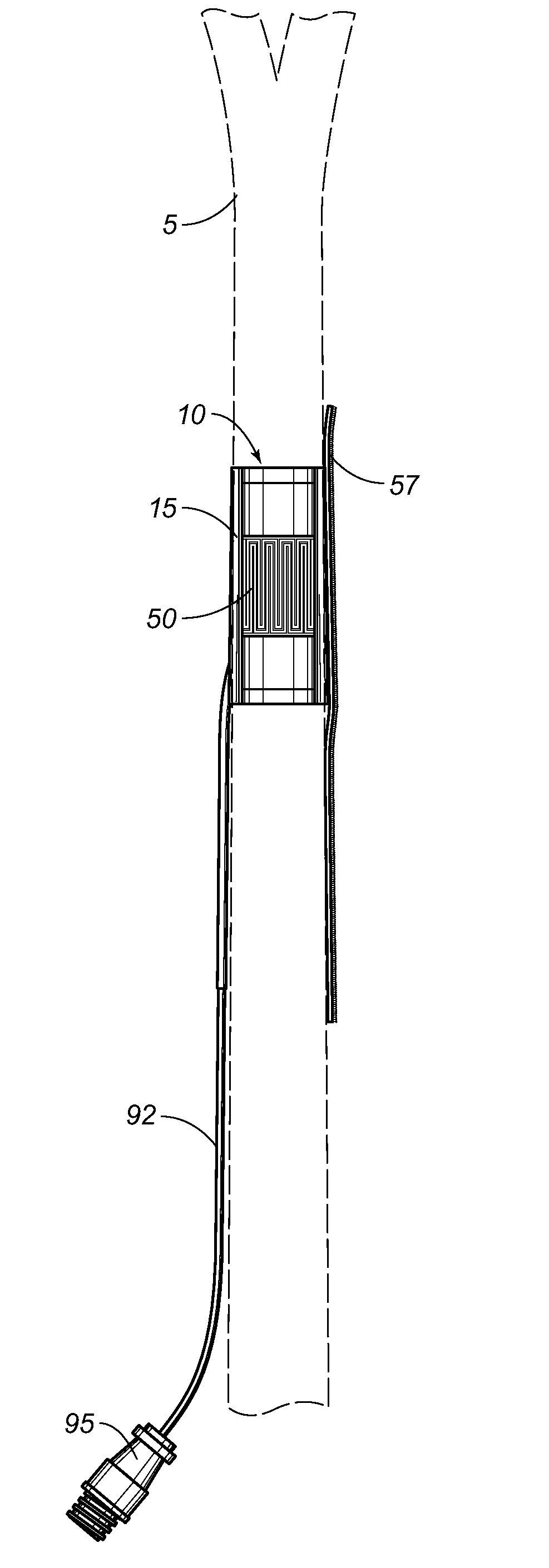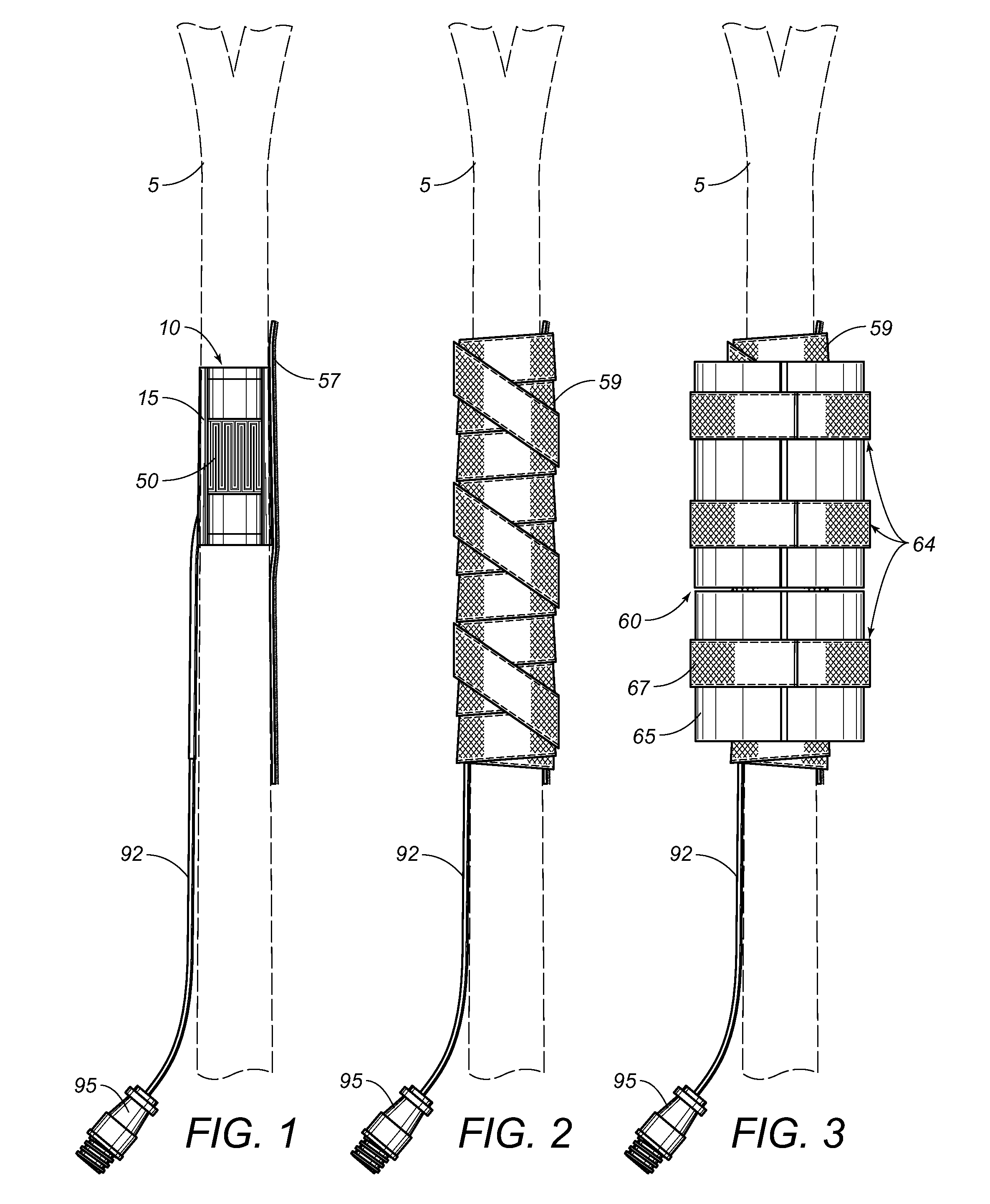Sap flow sensor apparatus
a technology of sap flow and sensor, which is applied in the direction of volume/mass flow measurement, measurement devices, instruments, etc., can solve the problems of no commercial products developed in the art, no actual demand for such commercial qs-measurement solutions, and no heat gain nor heat loss from heat storage, so as to prevent the ingress of rainwater, facilitate the running of water droplets, and prevent the accumulation of condensate
- Summary
- Abstract
- Description
- Claims
- Application Information
AI Technical Summary
Benefits of technology
Problems solved by technology
Method used
Image
Examples
Embodiment Construction
[0064]Reference is made herein to the figures in the accompanying drawings in which like numerals refer to like components. Now referring to FIGS. 1-7, there are depicted multiple frontal views of the preferred embodiment of the present sap flow sensor apparatus using iSHB methodology taught hereunder. Effectuating a significant departure from the current art, the present invention preferably collects only one reading of dT, thereby eliminating the need to read Qu and Qd, since all of the conduction energy losses are grouped or lumped together into one value, Qc. As will be herein described in detail, this new Qc value is determined from a radial thermopile imbedded in electronics assembly body member 10 (exposed in cut-away view in FIG. 1), which is assumed to constitute all heat conduction which has been experimentally corroborated as will be hereinafter elucidated.
[0065]It has been found that Qv typically constitutes 10 to 20% of the Qr value, and, if the two values are combined ...
PUM
 Login to View More
Login to View More Abstract
Description
Claims
Application Information
 Login to View More
Login to View More - R&D
- Intellectual Property
- Life Sciences
- Materials
- Tech Scout
- Unparalleled Data Quality
- Higher Quality Content
- 60% Fewer Hallucinations
Browse by: Latest US Patents, China's latest patents, Technical Efficacy Thesaurus, Application Domain, Technology Topic, Popular Technical Reports.
© 2025 PatSnap. All rights reserved.Legal|Privacy policy|Modern Slavery Act Transparency Statement|Sitemap|About US| Contact US: help@patsnap.com



